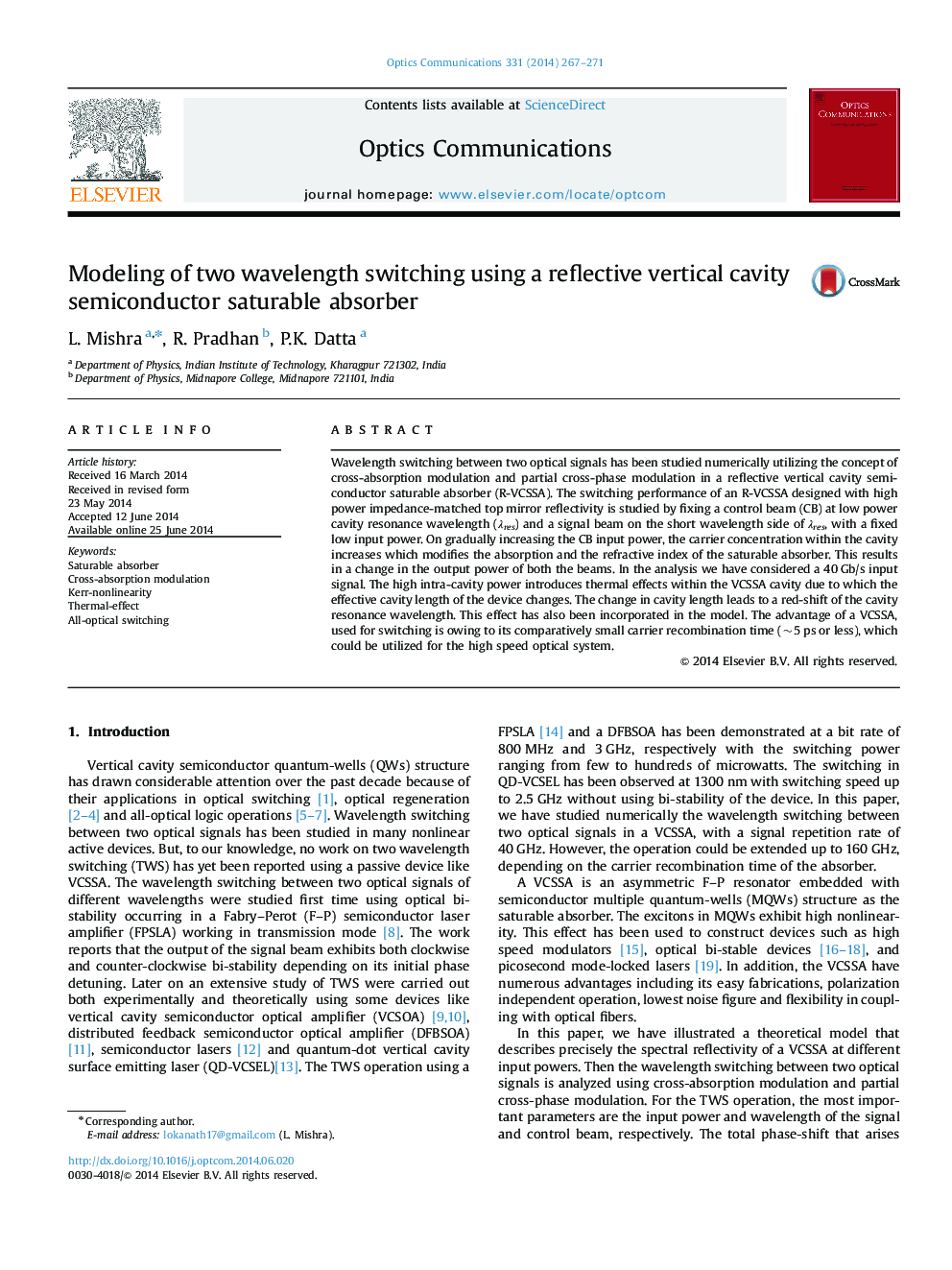| Article ID | Journal | Published Year | Pages | File Type |
|---|---|---|---|---|
| 1534474 | Optics Communications | 2014 | 5 Pages |
Abstract
Wavelength switching between two optical signals has been studied numerically utilizing the concept of cross-absorption modulation and partial cross-phase modulation in a reflective vertical cavity semiconductor saturable absorber (R-VCSSA). The switching performance of an R-VCSSA designed with high power impedance-matched top mirror reflectivity is studied by fixing a control beam (CB) at low power cavity resonance wavelength (λres) and a signal beam on the short wavelength side of λres, with a fixed low input power. On gradually increasing the CB input power, the carrier concentration within the cavity increases which modifies the absorption and the refractive index of the saturable absorber. This results in a change in the output power of both the beams. In the analysis we have considered a 40 Gb/s input signal. The high intra-cavity power introduces thermal effects within the VCSSA cavity due to which the effective cavity length of the device changes. The change in cavity length leads to a red-shift of the cavity resonance wavelength. This effect has also been incorporated in the model. The advantage of a VCSSA, used for switching is owing to its comparatively small carrier recombination time (~5 ps or less), which could be utilized for the high speed optical system.
Related Topics
Physical Sciences and Engineering
Materials Science
Electronic, Optical and Magnetic Materials
Authors
L. Mishra, R. Pradhan, P.K. Datta,
